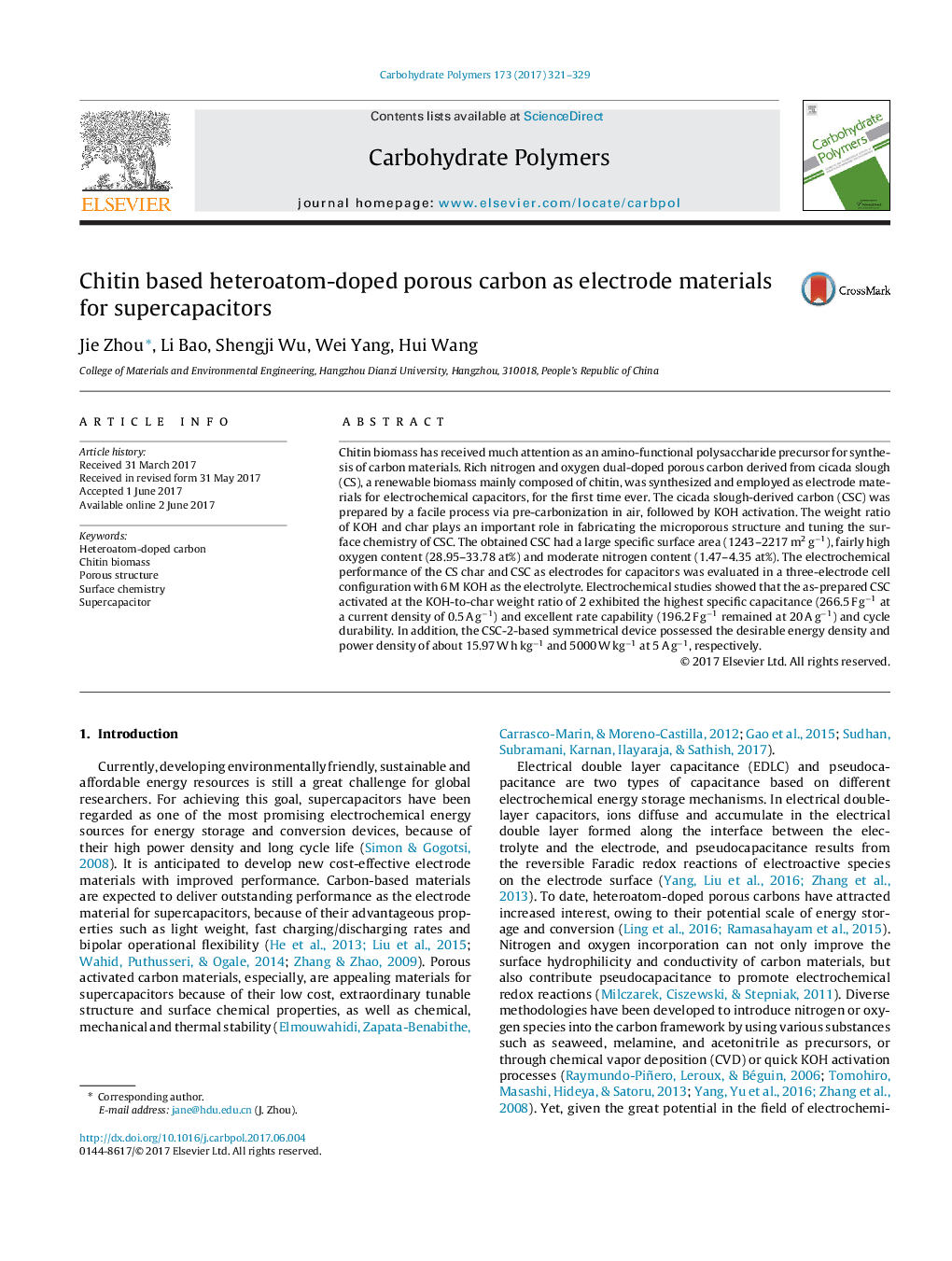| Article ID | Journal | Published Year | Pages | File Type |
|---|---|---|---|---|
| 5157408 | Carbohydrate Polymers | 2017 | 9 Pages |
Abstract
Chitin biomass has received much attention as an amino-functional polysaccharide precursor for synthesis of carbon materials. Rich nitrogen and oxygen dual-doped porous carbon derived from cicada slough (CS), a renewable biomass mainly composed of chitin, was synthesized and employed as electrode materials for electrochemical capacitors, for the first time ever. The cicada slough-derived carbon (CSC) was prepared by a facile process via pre-carbonization in air, followed by KOH activation. The weight ratio of KOH and char plays an important role in fabricating the microporous structure and tuning the surface chemistry of CSC. The obtained CSC had a large specific surface area (1243-2217 m2 gâ1), fairly high oxygen content (28.95-33.78 at%) and moderate nitrogen content (1.47-4.35 at%). The electrochemical performance of the CS char and CSC as electrodes for capacitors was evaluated in a three-electrode cell configuration with 6 M KOH as the electrolyte. Electrochemical studies showed that the as-prepared CSC activated at the KOH-to-char weight ratio of 2 exhibited the highest specific capacitance (266.5 F gâ1 at a current density of 0.5 A gâ1) and excellent rate capability (196.2 F gâ1 remained at 20 A gâ1) and cycle durability. In addition, the CSC-2-based symmetrical device possessed the desirable energy density and power density of about 15.97 W h kgâ1 and 5000 W kgâ1 at 5 A gâ1, respectively.
Related Topics
Physical Sciences and Engineering
Chemistry
Organic Chemistry
Authors
Jie Zhou, Li Bao, Shengji Wu, Wei Yang, Hui Wang,
